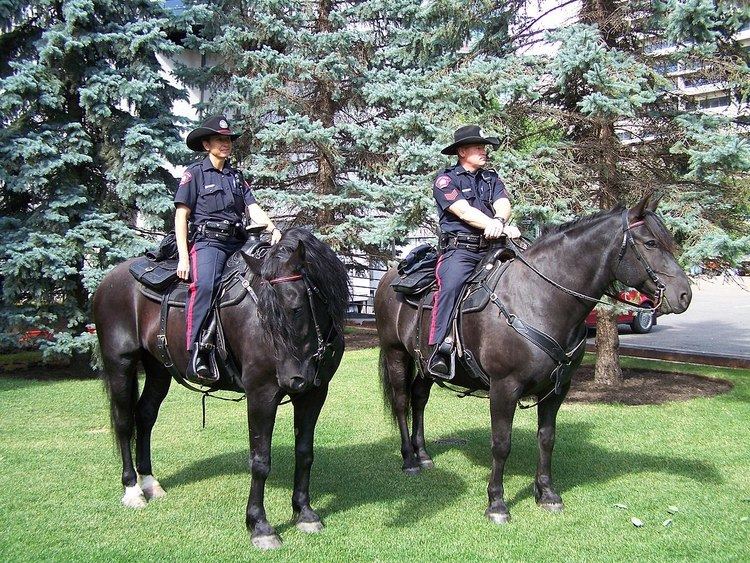Motto Onward Legal jurisdiction Municipal | Formed 1885 | |
 | ||
Legal personality Governmental: Government agency General nature Law enforcementCivilian agency Headquarters 5111 47th Street NECalgary, Alberta | ||
Calgary Police Service, CPS, formed in 1885, is the municipal police force for the City of Calgary, Alberta, Canada
Contents
Organization
The force was founded on February 7, 1885. The first chief was Jack Ingram, who supervised two constables. Past chiefs include Christine Silverberg, the first female police chief in Canada. The current head of the CPS is Chief Roger Chaffin.
CPS is divided into sections:
In 1993, as a direct result of the hit and run death of Constable Rick Sonnenberg, the Helicopter Air Watch for Community Safety, or HAWCS unit was created, and the Calgary Police Service became the first law enforcement agency in Canada to incorporate the use of air support into its routine operations. In 2006, the unit was expanded when a second helicopter was purchased.
A regional shortage of police recruits had previously led the Calgary Police Service to recruit officers from other international forces, especially the UK. To facilitate this, Canadian citizenship or Permanent Resident status wasn't a pre-requisite to apply, though a successful application was hinged on previous police experience.
For a recruit application today, the Calgary Police Service has reinstated the requirement to have Canadian citizenship, landed immigrant status or permanent resident status.
Rank Structure
The Service also employs Community Peace Officers. These officers are not police officers, however have limited provincial statute authority. Some are uniformed and operate the photo radar and CPS internal tow service. Others are not uniformed and work in administrative duties involving limited investigations.
Fatalities in the Line of Duty
Since its creation the CPS has lost eleven officers in the line of duty.
Patrol
Unmarked units typically use black painted steel wheels with centre caps, except the unmarked Dodge Grand Caravan and 2012 Dodge Charger which have factory alloy wheels. Unmarked Ford F-150 units typically have silver coloured 'headache racks'. Unmarked Ford Explorer is black with tinted windows. Unmarked Dodge Ram 1500 has a tool box in the truck bed. Unmarked vehicles never have any dealer decals of any type, and have a black fleet license plate sticker.
Tactical & Special Use
Aircraft, Motorcycles, Other Vehicles
2013 flood
In June 2013, Alberta experienced heavy rainfall that triggered catastrophic flooding throughout much of the southern half of the province along the Bow, Elbow, Highwood, Oldman, and Red Deer rivers and tributaries. Twenty-four municipalities declared local states of emergency as water levels rose and numerous communities were placed under evacuation orders. The Royal Canadian Mounted Police stated four people may have drowned near High River. Over 100,000 people have been displaced throughout the region.
Calgary Police’s Twitter account was locked when it reached its daily limit.
Crime
The Calgary census metropolitan area (CMA) had a crime severity index of 60.4 in 2013, which is lower than the national average of 68.7. A slight majority of the other CMAs in Canada had crime severity indexes greater than Calgary's 60.4. Calgary had the sixth-most homicides in 2013 at 24.
